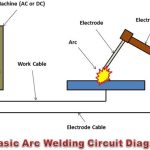Flux-Core Welding Vs. MIG Welding – The Differences
Flux-core welding and MIG welding techniques have several differences that set them apart in terms of wire type, wire construction, use of shielding gas, polarity, filler material, surface preparation, appearance, suitability for outdoor work, handling of thin stock, costs, and compatibility with specific materials.
Is Flux Core Welding as Good as MIG Welding?
Welding Town
Wire:
- Flux-core welding uses a tubular wire with flux inside, while MIG welding uses a solid wire.
Wire Construction:
- Flux-cored wires contain flux and additives specific to the intended weld and material, requiring different wires for each welding project. Storage conditions for flux-cored wires may also be more specific compared to solid wires.
Shielding Gas:
- MIG welding requires a shielding gas for proper weld protection, while flux-cored welding relies on the flux inside the wire for shielding. Flux-cored welding is often referred to as “gasless MIG welding.”
Polarity:
- MIG welding typically uses direct current electrode positive (DCEP) settings, while flux-core welding utilizes direct current electrode negative (DCEN) settings. Some flux-cored wires may require positive electrode arrangement.
Filler Material:
- MIG wires are solid and contain purer filler materials, while flux-cored wires have additives and a flux core specific to the intended weld.
Strength:
- Both flux-core and MIG welding techniques can produce strong welds if done correctly. Flux-cored welding may provide better penetration and stronger welds when working with cast iron.
Penetration:
- Flux-core and MIG wires penetrate well, with flux-core offering more focused heat, making it suitable for thicker materials.
Surface Preparation:
- Flux-core welding can handle dirt, rust, and paint, making it more forgiving in terms of surface preparation compared to MIG welding, which requires a clean and uncontaminated surface.
Appearance:
- MIG welding typically produces cleaner welds with minimal spatter, while flux-cored welding may produce slag, spatter, and spitting.
Outdoor Work:
- Flux-cored welding is more suitable for outdoor work as the flux inside the wire provides protection against winds, while MIG welding relies on the shielding gas, which can be affected by wind.
Thin Stock:
- MIG welding is often preferred for welding thin stock as it offers good penetration without burning through the material. MIG welds may also require less post-weld cleaning.
Costs:
- MIG welding may have lower wire costs, but it requires additional equipment like a gas tank, flow meter, and regulator, resulting in higher upfront costs.
Material Compatibility:
- Flux-cored welding provides better penetration and welds for cast iron, while MIG welding is commonly used for aluminum welding when combined with a spool gun. Flux-cored welding is also suitable for welding galvanized steel without the need for extensive surface preparation, unlike MIG welding.
Ultimately, the choice between flux-core and MIG welding depends on specific welding requirements, material compatibility, surface conditions, appearance preferences, and the availability of necessary equipment.










